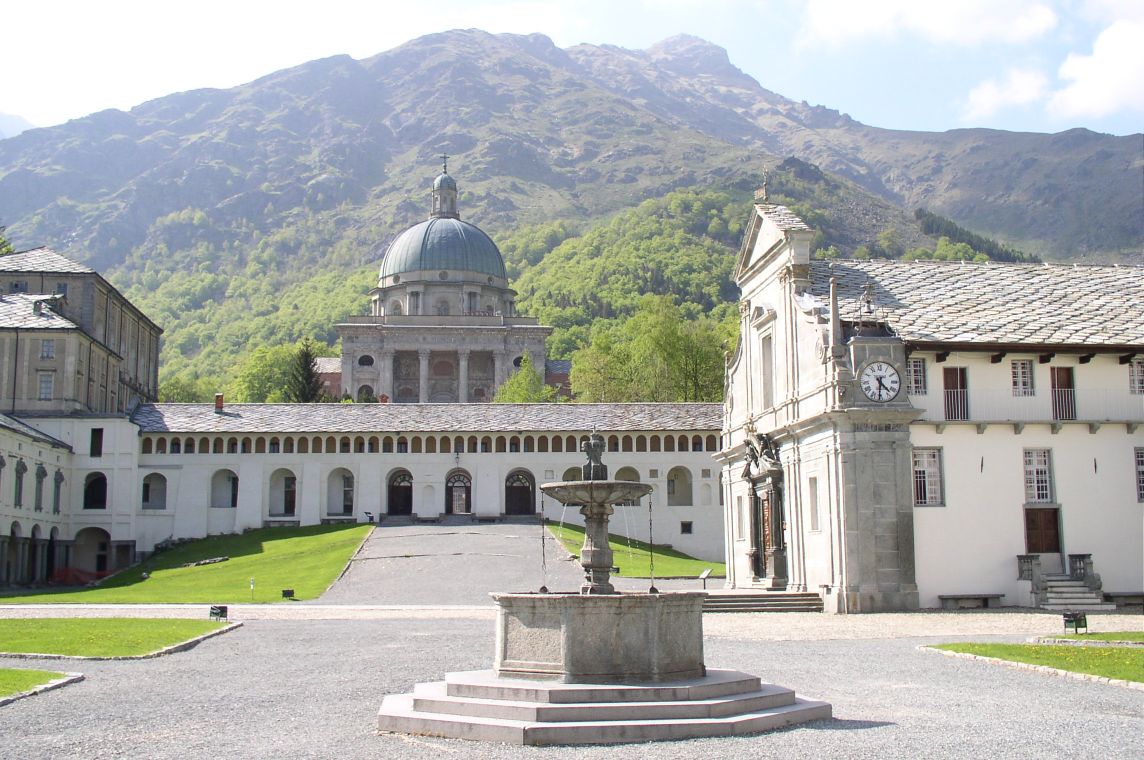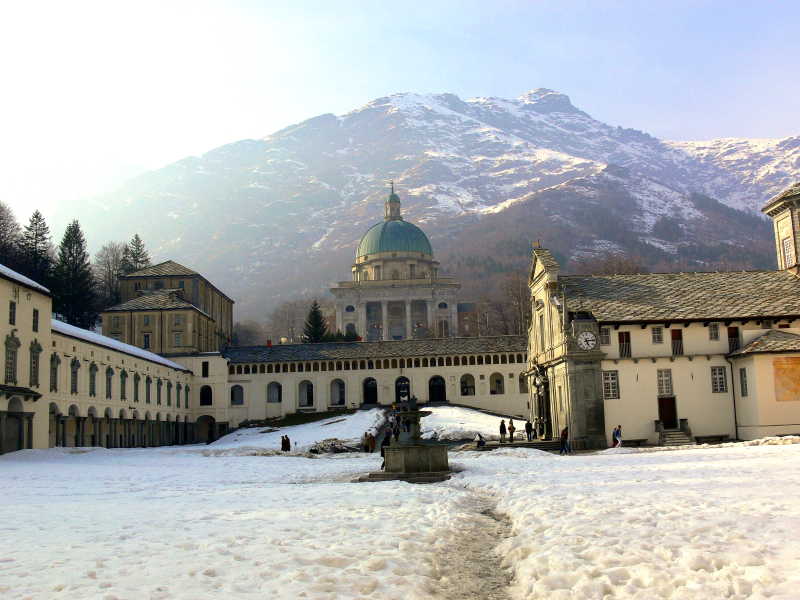
Oropa Sanctuary
This post is also available in:
 Italiano (Italian)
Italiano (Italian)
The Sanctuary of Oropa is located at 3.937 ft above sea level, in a beautiful natural setting.
Its construction dates back to the IV century, at the behest of St. Eusebio, the first bishop of Vercelli, who contracted several architects including Arduzzi, Gallo, Beltramo, Juvarra, Guarini, Galletti, and Bonora. According to the first official documents, the ancient churches of Santa Maria and San Bartolomeo used to stand in this very area as hermitages and points of reference for travellers and pilgrims.
Over the years, the sanctuary has undergone several transformations which have eventually brought it to the current monumental size; it’s an important destination for pilgrims as well.
The construction of the entire complex started from the Sacellum of the ancient basilica, built in the XVII century on the remains of Santa Maria church. The new sanctuary was the result of a vow made by the city of Biella during the plague epidemic of 1599.
The facade was designed by the architect Francesco Conti, with greenish veins of Oropa stone and a darker portal bearing the Savoy coat of arms of Duke Carlo Emanuele II, supported by two stone angels. The inscription ”O quam beatus, o Beata, quem viderint oculi tui” is carved on the architrave of the portal, a greeting for the pilgrims crossing the threshold of the basilica.
Inside the sanctuary, there is still the Eusebian shrine, built in the IX century, which, in turn, preserves precious frescoes dating back to the XIV century (they portray the Virgin Mary and some Saints). The sanctuary also houses the statue of the Black Madonna, made of pinewood, which is believed to have been brought here from Palestine by Saint Eusebius, in the IV century. The holy Virgin escaped Aryan persecution, hiding among the rocks where the “Roc Chapel” now stands.
Climbing the imposing staircase on Piazzale Sacro, visitors can reach the upper basilica, built to accommodate the pilgrims who used to gather at the Sanctuary. The construction began in 1885 and spanned the two world wars.
The basilica features three large bronze portals. It’s a large octagonal structure, dominated by the dome supported by high columns; between the latter, there are six chapels dedicated to the life of the Virgin, welcoming the visitors inside the large and grand hall.
An interesting and rare collection of nativity scenes from all over the world can be admired in the basilica as well.
To the left of the Sanctuary, there’s the Sacro Monte, acknowledged as a World Heritage Site by UNESCO and recently recognized as a Special Nature Reserve of Piedmont.
Between the XVII and XVIII centuries, twelve chapels dedicated to the life of the Virgin were built and populated with life-size polychrome terracotta statues: the Chapel of the Immaculate Conception of Mary, the Chapel of the Nativity of Mary, the Chapel of the Presentation of Mary in the Temple, the Chapel of the Abode of Mary in the Temple, the Chapel of the Marriage of Mary, the Chapel of the Annunciation, the Chapel of the Visitation, the Chapel of the Nativity of Jesus, the Chapel of the Purification of Mary, the Chapel of the Wedding at Cana, the Chapel of the Assumption of Mary, the Chapel of the Coronation of Mary in heaven or of “Paradise”.
This post is also available in:
 Italiano (Italian)
Italiano (Italian)
Contatti
Via Santuario di Oropa 48 - Oropa - 13900 Biella(BI)
015 25551200
Altre info
Intero: euro 3,00; ridotto: euro 2,00: gratuito per gruppi (min.25), accompagnatore, oltre i 65 anni, fino ai 6 anni, portatori di handicap e invalidi, titolari dell'Abbonamento Musei Torino Piemonte.
Orario Museo dei Tesori: invernale (1 settembre-30 giugno): lunedì-venerdì: aperto per gruppi solo su prenotazione; sabato e domenica: 10.00-12.30 e 14.30-17.00. Orario estivo (1 luglio-31 agosto): lunedì: aperto per gruppi solo su prenotazione; martedì-domenica: 10.00-12.30 e 14.30-17.00.


